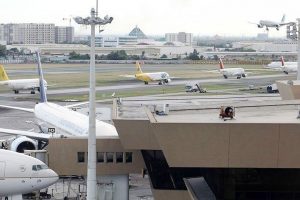THE Department of Transportation (DoTr) said it is due to meet with the Manila International Airport Consortium (MIAC) this week to discuss issues like which party is responsible for paying real property taxes.
“The unsolicited proposal is under evaluation by the DoTr. We’ve met with them several times and in fact, we’ll meet with them again this week,” DoTr Undersecretary for Aviation and Airports Roberto C.O. Lim told reporters on Tuesday.
“There are still (items to be clarified) regarding issues like real property taxes. So, another meeting will take place this week,” he added.
In April, the MIAC, composed of Aboitiz Infracapital, Inc., AC Infrastructure Holdings Corp., Alliance Global–Infracorp Development, Inc., Filinvest Developments, JG Summit Infrastructure Holdings Corp., and the Global Infrastructure Partners fund, submitted an unsolicited proposal for the rehabilitation of Ninoy Aquino International Airport (NAIA).
The proposal involves P267 billion worth of investment, which includes a P57-billion upfront payment and around P211 billion in development costs over a 25-year concession period.
Last month, the DoTr and the Manila International Airport Authority submitted to the National Economic and Development Authority a P141-billion package to serve as a baseline for solicited proposals. The package gives private concessionaires 15 years to operate the airport and recover their investment.
Mr. Lim said that the DoTr believes that a shorter concession period, particularly its 15-year proposal, will give the government more flexibility.
“We have to consider that our strategy… is to have a multi-airport strategy for the Greater Capital Region. So, we envisage that over time, with the forecast demand, you will have NAIA as one airport, and you have two other airports that have proposed to develop new airport complexes. We would welcome all of these three airports to serve the region,” said Mr. Lim.
The two other airports are the Bulacan International Airport and Sangley Point International Airport.
“On top of that, you already have an existing airport nearby, the Clark International Airport, which will become nearer once the subway that connects Manila to Clark is completed by 2027,” he added.
Mr. Lim said that the Transportation department has decided to adopt an option to add 10 years to its solicited proposal.
“At this point, we believe that (the 15-year period) is the better option. But we also are incorporating in our proposal an option to extend it by another 10 years in the event the circumstances warrant,” he said.
“So that’s how we’re approaching it. So, it has a 15-year concession period with an option to extend it by 10 years,” he added.
The DoTr has said it hopes to open bidding on the solicited proposal by September.
“For the solicited proposal, that is the working date that we’re using,” Mr. Lim said. “The good thing about the privatization of Manila International Airport is that there is great interest from the private sector to participate and that is a good indicator.”
Mr. Lim said these were the findings of a market sounding conducted by its project advisor, the Asian Development Bank. — Justine Irish D. Tabile

